We can add and subtract matrices, but sometimes we might want to multiply a matrix. This raises the question of if we can square a matrix – and if so, when.
So, can you square a matrix? You can square a matrix if it has the same number of rows and columns. This means you can square an nxn matrix, such as a 1×1, 2×2, or 3×3 matrix. If the number of rows is different from the number of columns, then you cannot square the matrix.
Of course, you can also take the square root of a matrix in some cases. However, you can only take the square root of a square matrix.
In this article, we’ll talk about squaring a matrix and how to do it. We’ll also take a look at square roots of matrices.
Let’s get started.
Can You Square A Matrix?
You can square a matrix – as long as the matrix has the same number of rows and columns. The reason is that we can only multiply two matrices in a specific situation: when the number of columns of the left matrix is the same as the number of rows in the right matrix.
A matrix that has the same number of rows and columns is called a square matrix (not to be confused with the square of a matrix!)
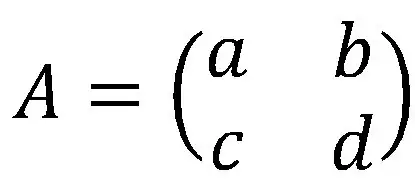
To avoid confusion, let’s take a look at what each of these terms means:
- A square matrix – any matrix that has the same number of rows and columns. For example, a 1×1 matrix is a square matrix (since it has 1 row and 1 column). A 2×2 matrix is also a square matrix (since it has 2 rows and 2 columns). Any nxn matrix is a square matrix (since it has n rows and n columns).
- The square of a matrix – the result of squaring a matrix, or multiplying a matrix by itself. If the matrix is A, then the square of that matrix is A*A (A times A) or A2. You can only take the square of a matrix that has the same number of rows and columns.
The idea will make more sense if we look at some examples.
How Do You Square A 2×2 Matrix?
To square a 2×2 matrix (call it A), you simply multiply the matrix A by itself. We call this result A2, and we can write a formula to find it.
If a matrix A is:

Then the square of A is:

But how do we find these entries? Well, we multiply the entries in the correct row (first matrix) with the entries in the correct row (from the second matrix) and add the products:
- Top left: first row of A with first column of A = a2 + bc
- Top right: first row of A with second column of A = ab + bd
- Bottom left: second row of A with first column of A = ac + cd
- Bottom right: second row of A with second column of A = bc + d2
Top left: the first row of A is [a b] and the first column of A is [a c]. Taking the products of entries and adding them, we get a*a + b*c = a2 + bc.
Top right: the first row of A is [a b] and the second column of A is [b d]. Taking the products of entries and adding them, we get a*b + b*d = ab + bd.
Bottom left: the second row of A is [c d] and the first column of A is [a c]. Taking the products of entries and adding them, we get c*a + d*c = ac + cd.
Bottom right: the second row of A is [c d] and the second column of A is [b d]. Taking the products of entries and adding them, we get c*b + d*d = bc + d2.
It is easier to use the formula for A2 to find the result of squaring a matrix A. Let’s take a look at some examples to see how squaring a 2×2 matrix works in practice.
Example 1: Squaring A 2×2 Matrix
Let’s say we have the 2×2 matrix

Then we have a = 1, b = 2, c = 3, and d = 4. To calculate the entries of the matrix, we need:
- Top left: a2 + bc = 12 + 2*3 = 1 + 6 = 7
- Top right: ab + bd = 1*2 + 2*4 = 2 + 8 = 10
- Bottom left: ac + cd = 1*3 + 3*4 = 3 + 12 = 15
- Bottom right: bc + d2 = 2*3 + 42 = 6 + 16 = 22
So, the matrix A2 looks like this:
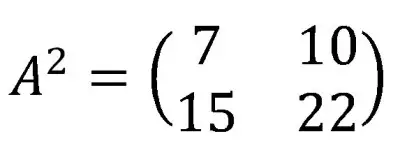
Example 2: Squaring A 2×2 Matrix
Let’s say we have the 2×2 matrix

Then we have a = 1, b = 0, c = 2, and d = -1. To calculate the entries of the matrix, we need:
- Top left: a2 + bc = 12 + 0*2 = 1 + 0 = 1
- Top right: ab + bd = 1*0 + 0*(-1) = 0 + 0 = 0
- Bottom left: ac + cd = 1*2 + 2*(-1) = 2 + -2 = 0
- Bottom right: bc + d2 = 0*2 + (-1)2 = 0 + 1 = 1
So, the matrix A2 looks like this:
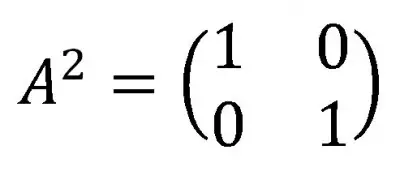
This happens to be the identity matrix, since any matrix multiplied by this one will yield the same matrix as the product.
So, as it turns out, our matrix A in this example is a square root of the identity matrix (more on square roots of a matrix later!)
How Do You Square A 3×3 Matrix?
To square a 3×3 matrix (call it A), you simply multiply the matrix A by itself. We call this result A2, and we can write a formula to find it.
If a matrix A is:

Then the square of A is:

The process for finding the entries is similar to the one for 2×2 matrices. For example, to find the top left entry, we use the first row of A [a b c] and the first column of A [a d g].
This gives us a*a + b*d + c*g = a2 + bd + cg as the top left entry of the 3×3 matrix A2. To calculate the entries of the matrix, we need:
- Top left: first row of A with first column of A = a2 + bd + cg
- Top middle: first row of A with second column of A = ab + be + ch
- Top right: first row of A with third column of A = ac + bf + ci
- Middle left: second row of A with first column of A = da + ed + fg
- Middle middle: second row of A with second column of A = db + e2 + fh
- Middle right: second row of A with third column of A = dc + ef + fi
- Bottom left: second row of A with first column of A = ga + hd + ig
- Bottom middle: third row of A with first column of A = gb + he ih
- Bottom right: third row of A with third column of A = gc + hf + i2
Example: Squaring A 3×3 Matrix
Let’s say we have the 3×3 matrix

Then we have a = 1, b = 2, c = 3, d = 4, e = 5, f = 6, g = 7, h = 8, and i = 9.
- Top left: a2 + bd + cg = 1 + 8 + 21 = 30
- Top middle: ab + be + ch = 2 + 10 + 24 = 36
- Top right: ac + bf + ci = 3 + 12 + 27 = 42
- Middle left: da + ed + fg = 4 + 20 + 42 = 66
- Middle middle: db + e2 + fh = 8 + 25 + 48 = 81
- Middle right: dc + ef + fi = 12 + 30 + 54 = 96
- Bottom left: ga + hd + ig = 7 + 32 + 63 = 102
- Bottom middle: gb + he ih = 14 + 40 + 72 = 126
- Bottom right: gc + hf + i2 = 21 + 48 + 81 = 150
So, the matrix A2 looks like this:
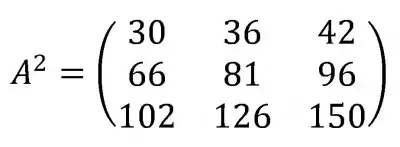
How To Find The Square Root Of A Matrix
To find the square root of a matrix A, we need A to be a square matrix (otherwise, we cannot find its square root). So, A has to have the same number of rows and columns.
We also know that the square root of A is going to be a square matrix. Let’s call R the square root of A.
Then we need to solve the equation R2 = A.
As it turns out, a matrix can have several different square roots. In general, if R is a square root of A, then –R is also a square root of A (-R is simply the matrix we get when we change the sign of every entry in the matrix R).
A matrix may also have no square root with real entries, but it may still have a square root with complex (or imaginary) entries.
Remember earlier that we found that the matrix with entries (1, 0, 2, -1)

is a square root of the matrix (1, 0, 0, 1).
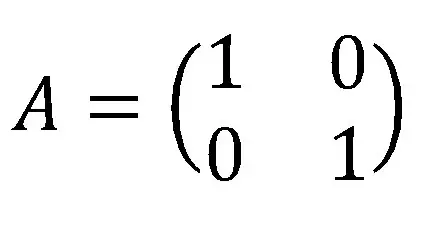
This means that the negative of the matrix (1, 0, 2, -1) is also a square root: (-1, 0, -2, 1).
How To Find The Root Of A 2×2 Matrix
If A is a 2×2 square matrix with entries (e, f, g, h) and R is one of its square roots (also a 2×2 matrix) with entries (a, b, c, d), then we would need to solve these four equations simultaneously:
- a2 + bc = e
- ab + bd = f
- ac + cd = g
- bc + d2 = h
These equations come from equating the four entries of R2 (left side of each equation)

with the four entries of A (right side of each equation).
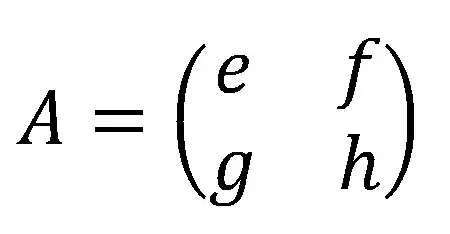
For example, let’s say we want to find the square roots of the 2×2 identity matrix with entries (1, 0, 0, 1). This means e = 1, f = 0, g = 0, and h = 1.
This gives us the following equations:
- a2 + bc = 1
- ab + bd = 0
- ac + cd = 0
- bc + d2 = 1
Solving the second equation, we get ab = -bd or d = -a.
Solving the third equation, we get ac = -cd or d = -a.
From this, we can substitute d = -a into the fourth equation.
This gives us:
- bc + (-a)2 = 1
which comes out to the same thing as the first equation.
This means that any matrix of the form (a, b, c, -a) where a2 + bc = 1 is a square root of the identity matrix (1, 0, 0, 1).
You can learn more about taking the square root of a matrix in this article from Wikipedia.
Conclusion
Now you know when you can square a matrix and what a square matrix is. You also have an idea of how to find the square root of a matrix.
I hope you found this article helpful. If so, please share it with someone who can use the information.
Don’t forget to subscribe to my YouTube channel & get updates on new math videos!
~Jonathon

